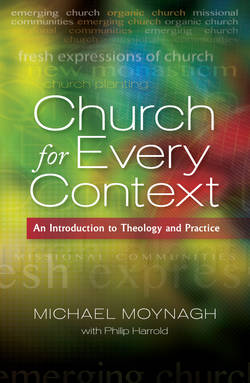Читать книгу Church for Every Context - Michael Moynagh - Страница 55
На сайте Литреса книга снята с продажи.
Charles Kingsley’s life in the kingdom
ОглавлениеIn the century that followed the great English Revival, the Industrial Revolution brought widespread social dislocation and dizzying change to all aspects of life in the British Isles. The population of England expanded from nine million in 1801 to 33 million in 1901. Growth was most dramatic in the larger towns and cities, especially as the agrarian economy of the countryside went into decline. Society was highly segregated, and the working class, in particular, was forced into dense ghetto-like neighbourhoods with overcrowding, poverty, unemployment and inadequate sanitation.
Thanks in part to the Revival, the Church of England had become more aware of these changes. New churches were planted and a wide array of reform societies organized to address the various social, economic and moral ills of the day. A traditional parish might gradually emerge out of rather non-traditional circumstances. Small mission halls or even corrugated-iron structures sometimes served as the first meeting places, often with the assistance of the local people. Sunday schools, day schools, libraries and charities then began their work, and eventually more comprehensive ‘settlement’ houses offered the whole gamut of services required in the most severely impoverished neighbourhoods (Morris and Macleod, 2000).
What was behind all of this rising church concern for the social conditions of the nation? One of the more fascinating windows into this era is the ministry of Charles Kingsley and his parish church in the village of Eversley in north-eastern Hampshire. This country parson, novelist, labour activist and advocate of ‘Christian socialism’ worked tirelessly among both the rural and, later in life, urban poor, because he was convinced that in baptism Christians were initiated into the kingdom of God and set free from self-concern to serve others. They were to be a positive force in the world, working toward a good society – much as we have seen at Little Gidding and in the Methodist societies.
When, in 1844, Kingsley first arrived at Eversley, he was told by a local farm labourer that there was an oppressive weight on the hearts of the local people – ‘and they care for no hope and no change, for they know they can be no worse off than they are’ (Kingsley, 1899, p. 96). As Kingsley got to know those whom he had been called to serve, he became deeply concerned about the grinding poverty and spiritual darkness of their everyday lives. He saw how the circumstances of everyday life can extinguish hope and sap interest in or commitment to change. Kingsley tended to people in their everyday settings, sometimes working beside them in the fields, and calling on them as many as six or seven times a day when illness and other crises hit home.
Equally remarkable, however, was the way Kingsley mobilized his small and impoverished parish to address the needs of its context. It organized cooperatives for the poor, ‘shoe clubs’, ‘coal clubs’, a maternal society, a loan fund and a lending library. An adult evening school was established to address the problem of illiteracy, and Sunday schools and weekly cottage lectures were planned for general as well as Christian education. Kingsley’s revival of catechesis and confirmation provided a model for the whole Church of England. A church building that had formerly been vacant throughout much of the week was now buzzing with all sorts of activities on a daily basis. In its own way, Kingsley’s parish church became ‘a school for God’s service’.
Learning how to read, having wider access to the Scriptures and gaining a deeper understanding of God’s mission in the world remained the chief concerns of the church at Eversley for years to come. These commitments turned an insular country parish into a missionary outpost. Even the dilapidated structure of the church was refurbished and reconfigured with multipurpose spaces to serve the expanding array of ministries. Once again, a church was recovering the vision of how to be a community of the gospel in the midst of life.
It was Kingsley’s vision of the kingdom of God that provided the DNA for this outreach, moving the church beyond an exclusive ‘come-to-us’ mentality that sometimes marginalizes parish life. The recovery of an incarnational ministry had such dramatic effect on the Eversley parish that it was, in effect, reborn as a mission and contextually-shaped church – two of the hallmarks of ‘new contextual churches’.
Eversley parish was
missional – the church served people, including those who rarely attended;
contextual – it addressed the needs of people in their ordinary lives;
formational – Kingsley revived catechesis and confirmation, and pioneered Christian education.
